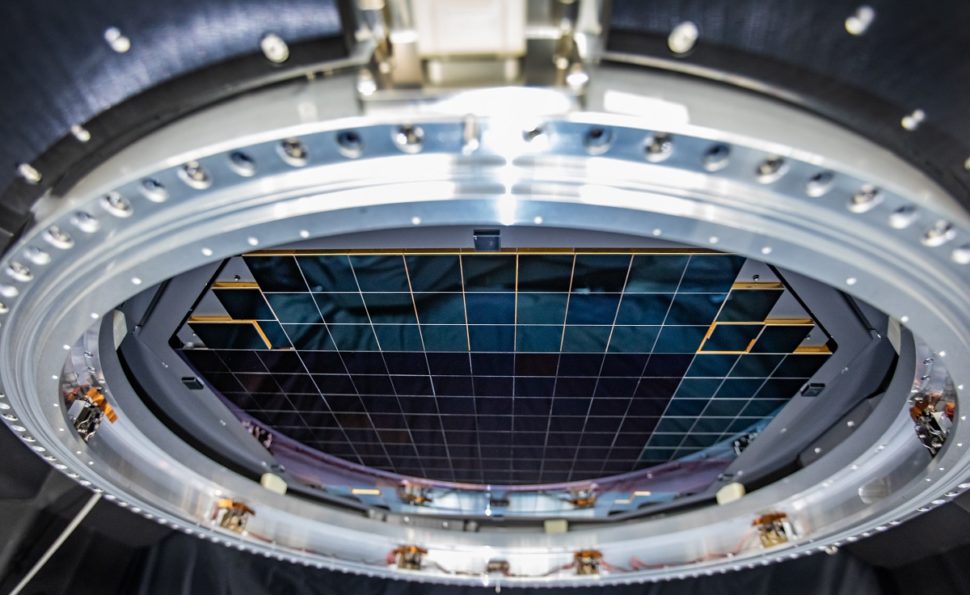SLAC National Accelerator Laboratory‘s giant digital camera core has made history with its first photos. The 3,200-megapixel digital images are by far the largest photos ever taken in a single shot.

According to reports, the test photos are so big that a person would need 378 4K ultra-high-definition display screens to view one of them in full size. The resolution of the images is also so high that a golf ball can be seen from a distance of 15 miles (24.14km).
Aaron Roodman, a scientist at SLAC, was quoted as saying:
“Taking these images is a major accomplishment. With the tight specifications, we really pushed the limits of what’s possible to take advantage of every square millimeter of the focal plane and maximize the science we can do with it.”
Rubin Observatory’s Giant Digital Camera Core
The core will soon be integrated into Vera Rubin Observatory‘s giant digital camera or the Legacy Survey of Space and Time Camera.
LSST is still under construction. But once completed, it will be used by astrophysicists to take panoramic images of the whole Southern sky.
That’s hundreds of ultra-high-resolution pictures in the next decade.
LSST’s core is equipped with imaging sensors, similar to the ones in smartphones, that convert light emitted or reflected by an object into electrical signals. These signals are then used to produce digital images.
LSST’s focal core is bigger and more sophisticated than any commercial imaging sensor available in the market today.
The core’s focal plane is over two feet wide. It has 189 individual imaging sensors or charge-coupled devices (CCDs). The CCDs and other parts of the core are housed in subunits or “rafts.” Each raft is two feet tall, weighs around 20lbs, and costs up to three million dollars.
The rafts were made at the Department of Energy‘s Brookhaven National Laboratory. They were turned over to the SLAC team last year, who then completed slotting them into their assigned places in the focal plane grid last January. The process reportedly took six months to be finished.
Regarding their achievement, SLAC’s Director of Observatory, Steven Kahn, said:
“This achievement is among the most significant of the entire Rubin Observatory Project. The completion of the LSST Camera focal plane and its successful tests is a huge victory by the camera team that will enable Rubin Observatory to deliver next-generation astronomical science.”











Comments (0)
Most Recent